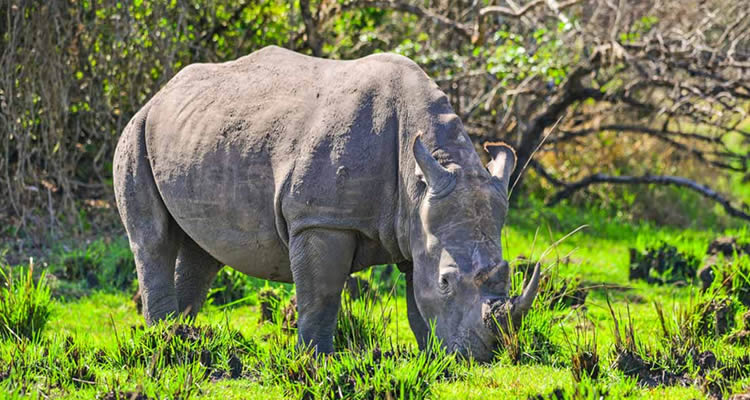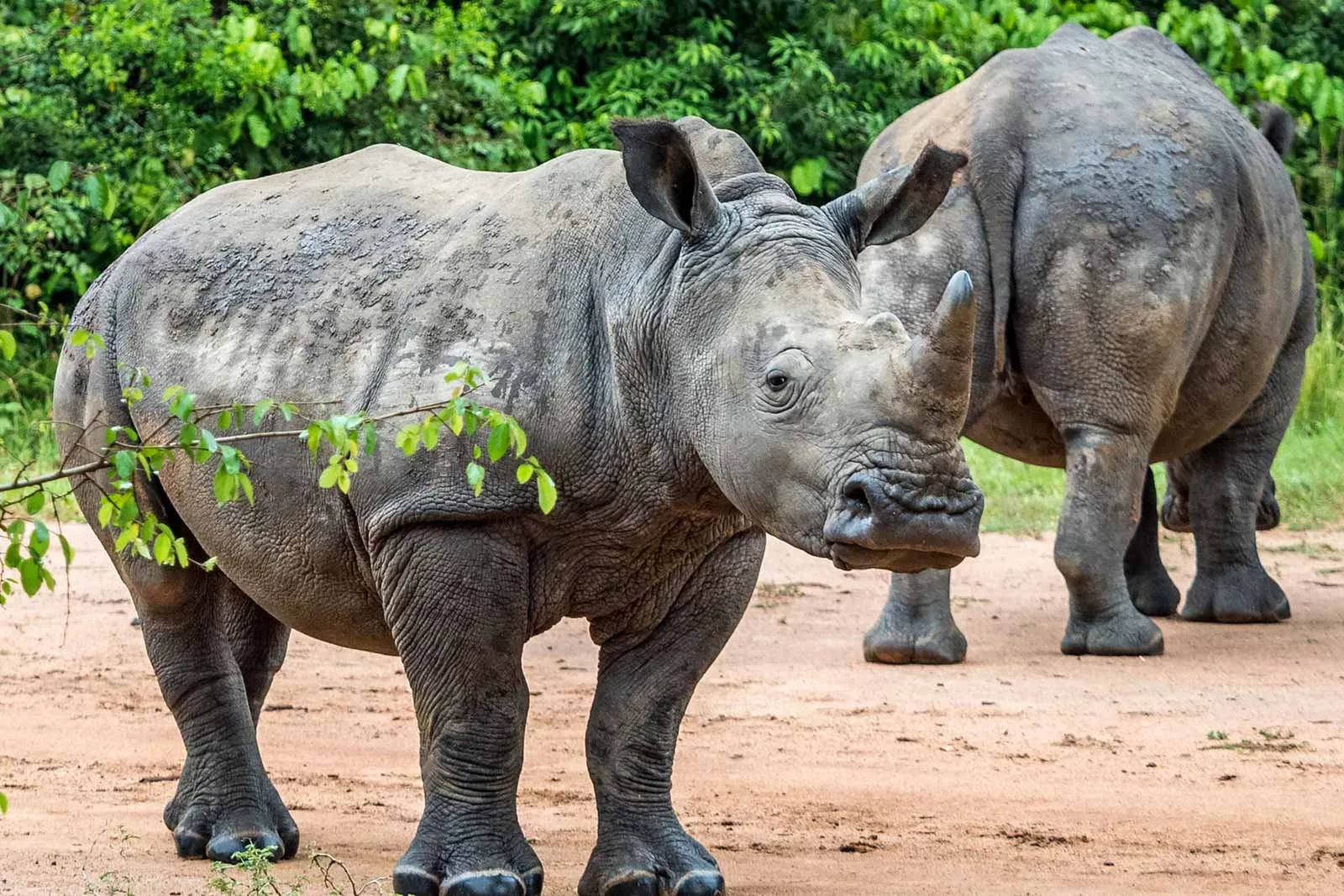Ziwa Rhino Sanctuary.
Ziwa Rhino Sanctuary is a conservation success story in Uganda, it’s a safari destination where the majestic white rhinoceros has been reintroduced and is thriving. It’s located in Nakasongola District that is roughly 176 kilometers north of Kampala, the sanctuary serves as the only place in Uganda where you can see rhinos in the world. Its main goal is to bred the viable population of rhinos and ultimately reintroduce them to Uganda’s national parks, that plays an important part of the country’s biodiversity.
The sanctuary is situated on a large tract of savanna and woodlands that provides the best habitat for the rhinos. This area us managed by rhino Fund Uganda in partnership with the Uganda Wildlife Authority (UWA) and its protected to ensure the safety of the animals from poaching, which was the main reason for their extinction in the country.

The sanctuary is not just a home for the rhinos’ it also hosts a variety of other wildlife like antelopes, monkeys and various bird species making it a rich ecosystem to explore on a Uganda safari with Nyumbu Beyond Journeys.
The history of Rhinos in Uganda.
The story of the rhinoceros in Uganda is a tragic, marked by near total extinction. Historically both the black and white rhinoceros and then northern white rhinoceros mover freely across the country. However, widespread poaching, reduced the demand for the rhino horn and the politically instability of the 1970’s and 80’s led to the decline in their numbers. By 1983, the last wild rhino in Uganda was seen, and the species was declared extinct in the country. This was reduced Uganda’s wildlife heritage and ecosystem. The absence of rhinos, which are large herbivores that had an effect on the environment, while alerting vegetation patterns and disrupting the natural balance.
The need to bring them back was a conservation policy. The idea of establishing a sanctuary reintroduce and breed rhinos was born in the early 2000’s. Rhino Fund Uganda is a non-governmental organization it was established with the specific mission of re-establishing a rhino population. They worked to secure a suitable location and in 2005, Ziwa Rhino Sanctuary was created on land leased from the private landowner.
Reintroduction and Breeding Program.
The first rhinos to arrive at Ziwa were two northern white rhinos from Kenya and four southern white rhinos from a sanctuary in Florida, USA. These initial 6 rhinos became the founding population of the sanctuary. The breeding program was carefully planned and then monitored, focusing in creating a genetically diverse and healthy rhinos. The rhinos were adapted into their new home, and the first rhinos was a male and then named Obama, was born in 2009. His birth was a momentous occasion that symbolized the successful reintroduction of the species.

Since then the population has grown steadily, with the new claves being born regularly. The success of the breeding program is dedicated work of the rangers, veterinarians and conservationist at the sanctuary. The rhinos are monitored very time to ensure their safety and well-being. This is important in protecting them from threats, particularly poaching. The sanctuary’s ultimate goal is to reach a population of at least 30 rhinos, a number considered viable for a reintroduction to a national park, most likely Murchison Falls National Park.
Tourism and Conservation.
Ziwa Rhino Sanctuary is more than a breeding center; its popular tourist safari destination that plays an important role in funding its own conservation. Visitors can go on the guided rhino treks, to where the tourists walk with the trained ranger to see the rhinos up close in their natural habitat. This a unique safari experience allows the tourists to witness the majestic animals from a safe distance, learn about their behavior, and understand the importance of their conservation. The sanctuary also offers other safari activities like bird watching, nature walks and visiting a shoebill swamp.
The income that the tourists come for rhino tracking safari experience funds for the sanctuary’s operations including rangers, veterinary doctors, and community outreach programs. By visiting Ziwa, the tourists directly contribute to the lives of the rhinos and the local communities that benefit from the sanctuary. This model of tourism based conservation is sustainable way to ensure the long-term prot4ection of the species and is a shining example of how wildlife can be a source of economic benefit and a driver of conservation.

